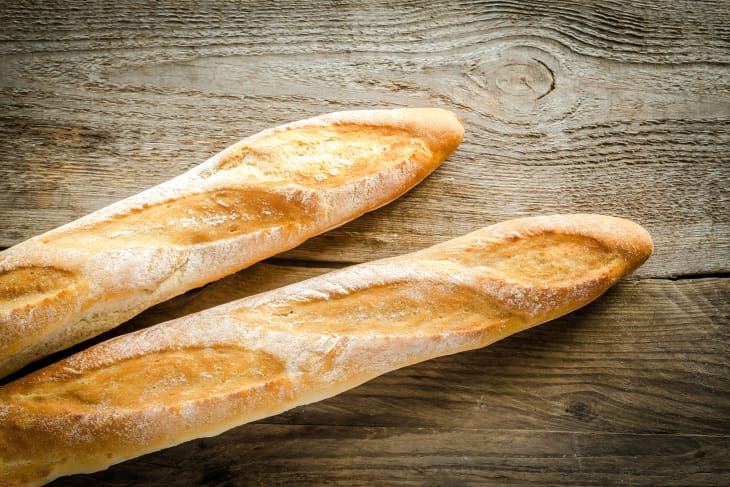To Bake Better Homemade Bread & Rolls: Use a Thermometer!

Have you ever cut into a loaf of freshly baked bread and found a spot of gooey dough, right in the center? I have! I’ve also roasted rolls into dry, crumbly nuggets — never a good thing. The key, I’ve found, to baking really great bread and rolls is using my trusty kitchen thermometer to tell me precisely when the bread is ready. Read on for tips on using your thermometer to get just the right texture in your homemade bread and rolls.
Why a Thermometer Helps Make Great Bread
I used to think that thermometers were fussy and a pain, a trapping of scary precision in cooking. But then I realized that a thermometer is actually the uncertain cook’s best friend. They are the key to perfect roasts and meats, yes, but also to perfect breads.
I often turn to Peter Reinhart and his wonderful Bread Baker’s Apprentice — a handbook to nearly any bread question and fact.
Reinhart says that most sandwich loaves and rolls — usually enriched with egg, milk, or sugar, and meant to be softer — are done when their internal temperature reaches 185°F to 190°F. If you like a harder crust on your sandwich bread, let them get up to 205°F.
Hearth breads, on the other hand, like the very wet, rustic type of dough used in No-Knead Bread should always be baked to an internal temperature of at least 205°F. I bake my No-Knead Bread until it reaches 210°F or 215°F.
Correct Bread Temperatures
Nutritional Info
Ingredients
Enriched rolls: 185°F to 190°F
Enriched sandwich bread: 205°F
Lean rustic or hearth breads, such no-knead bread: 205°F to 210°F
Instructions
How To Take Bread's Temperature
Now, the obvious question: how do you take your bread's temperature? You don't want a big hole poked right in the middle of your golden crust!
When making sandwich loaves baked in a loaf pan, I insert my trusty Thermapen thermometer in the corner and angle it so that the probe is towards the center of the bread. You want to take the temperature as close to the center as possible.
With hearth breads I shake the pan slightly and use a towel to lift the bread up on its side. Then I put the thermometer into the underside of the bread.
Remember! Temperatures rise quickly near the end of baking so if you are still 10 degrees off, check again in five minutes or less.
Do you use a thermometer to help determine when rolls or bread are finished properly? I hate gooey, underbaked rolls, so having this little trick up my sleeve has been so helpful. (That photo above is me taking the temperature on a big pan of rolls for my brother's wedding dinner.)
How To Take Bread’s Temperature
Now, the obvious question: how do you take your bread’s temperature? You don’t want a big hole poked right in the middle of your golden crust!
• When making sandwich loaves baked in a loaf pan, I insert my trusty Thermapen thermometer in the corner and angle it so that the probe is towards the center of the bread. You want to take the temperature as close to the center as possible.
• With hearth breads I shake the pan slightly and use a towel to lift the bread up on its side. Then I put the thermometer into the underside of the bread.
Remember! Temperatures rise quickly near the end of baking so if you are still 10 degrees off, check again in five minutes or less.
Do you use a thermometer to help determine when rolls or bread are finished properly? I hate gooey, underbaked rolls, so having this little trick up my sleeve has been so helpful. (That photo above is me taking the temperature on a big pan of rolls for my brother’s wedding dinner.)
(Image: Faith Durand)
